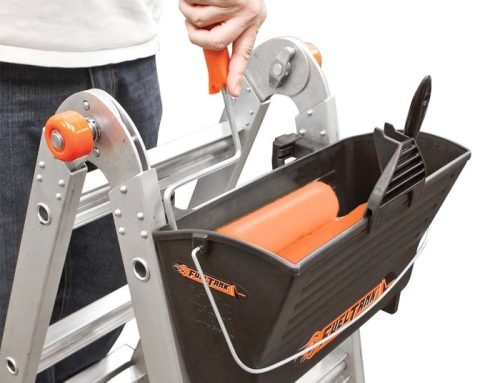Over a hundred years ago in Massachusetts, America, a fire chief named Edward F. Dahill in New Beford invented an aerial ladder hoist, which enabled firefighters to put up a ladder of up to seventy feet in seven seconds (that's almost as fast as the fireman shooting up the ladder in the crazy video we put up a link to on Thursday, check it out if you haven't already). In this case to put it up so fast two cylinders holding compressed air were deployed to raise the ladder, negating the need for firefighters to manually raise the ladder, thereby saving crucial time at the scene of an emergency.
A Legal Battle for Ladders
Dahill's invention was taken up by the Ahrens Fire Engine Company, founded in 1905 after a legal battle to extricate themselves from the newly formed American-LaFrance Fire Engine Company. This body had been set up as result of several mergers between fire engine manufacturing companies over the previous decade, first between Ahrens Manufacturing Company, Sislby, Button and Clapp & Jones (American Fire Engine Company, 1891), then between several other manufacturers (International Fire Engine Company, including the LaFrance Fire Engine Company), and then finally between those two conglomerates. Chris Ahrens, the owner of the original Ahrens Fire Engine Company, along with his brother and sons, did not like the new manufacturing body as it was run by bankers, lawyers and upper managers, not by the people with experience in designing and building fire engines and ladder trucks. They decided to split from this body and established themselves as a separate company. In 1910 the company was re-organised as the Ahrens-Fox Fire Engine Company, with Charles H. Fox (Chris Ahrens' son in law, who was part of the 1905 company, was president).
The Birth of The Air Hoist Ladder
It was not until 1923 that the air hoist aerial ladder was refined, despite Charles H. Fox's close friendship with Edward F. Dahill and the invention being twenty years old by that time (Dahill created the first air hoist in 1902). The air hoist method was much more efficient than the spring mechanisms that were commonly in use at the time and until hydraulic hoists were invented in the 1930's, the air hoist was hands down the best method. 1923 also saw another ladder innovation from the Ahrens-Fox Fire Engine Company, with the introduction of a double-banked ladder rack for the engines, allowing ladders to be stored side by side rather than stacked on top of each other. This simple yet efficient design change meant that the ladder truck's centre of gravity was lowered, thereby making cornering safer and allowing the engines to get to emergency scenes quickly. From the two simple yet effective improvements that the Ahrens-Fox Fire Engine Company made to ladder technology within the firefighting arena, we can see that their decision to leave the corporate conglomerate was the right one for ladder technology. Without the constraints of big business (which was run by people who knew nothing about the practicalities of ladder truck design and manufacture, or how they were used in the field), Ahrens and Fox could innovate and improve and make firefighting safer and better for those doing the job. The stock market crash and depression following the events of 1929 proved to be devastating for the Company however and the firm was sold in 1939 to a Cincinnati businessman named Harold LeBlond. The company was no longer in production mode by 1940 and was re-purposed for making lathes during WWII. After the war, fire engine production started up again and the demand for the quality engines customers had gotten used to, meant that the company could not cope with the demand. LeBlond stopped accepting orders, which in turn caused speculation that the company was about to fold. This meant that from 1950, the company struggled to get any orders and it was sold again, eventually resulting in C.D Beck & Company (Sidney,Ohio) being contracted to build the last 23 trucks ordered in 1953. There is now a group of enthusiasts with various rights to the company name, brand and equipment operating separately to keep the Ahrens-Fox name alive, which is laudable considering the effect this family company had on fire engine technology, their ladders and innovations which we can still see the influences of today.






Leave A Comment
You must be logged in to post a comment.